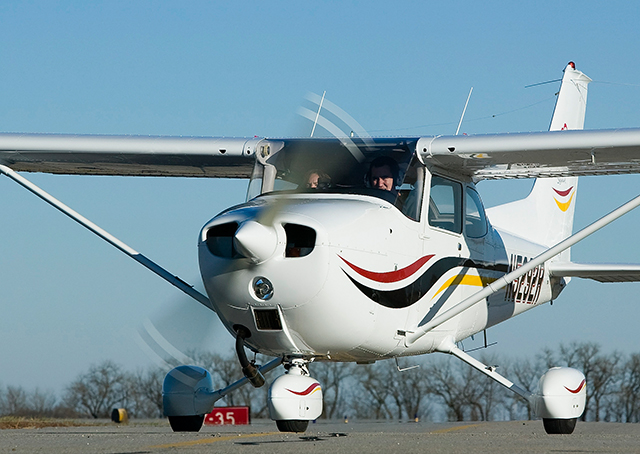 A pilot contacts ground control for clearance to taxi during the early-morning flurry of activity at an airport coming alive for the day. The controller grants the clearance, assigning the Cessna pilot a straightforward taxi route. A moment later, the pilot of a Mooney single-engine airplane also requests taxi from the same ramp.
A pilot contacts ground control for clearance to taxi during the early-morning flurry of activity at an airport coming alive for the day. The controller grants the clearance, assigning the Cessna pilot a straightforward taxi route. A moment later, the pilot of a Mooney single-engine airplane also requests taxi from the same ramp.
Peering into the rising sun, the controller can’t see the Cessna, so she instructs the Mooney pilot to give way to that aircraft and taxi to the runway via the same route. The Mooney pilot acknowledges, and surveys the ramp for the aircraft to be followed.
Meanwhile, the Cessna sits motionless, out of sight between two rows of hangars. Taxi clearance in hand, the pilot has stopped to untangle some wires associated with electrical devices and power sources. This also seems like a good chance to check email and quickly go online to see whether the stock market is heading for an up or down open. And look, there’s a new voicemail message on the mobile phone.
Good news! Equity-index futures are pointing to a strong opening on Wall Street—but the pilot’s attention is drawn back to the ground control frequency, on which a Mooney pilot is requesting (in a testy tone) that Ground point out the aircraft the Mooney should follow to the runway.
The Cessna pilot is waving and flashing a hearty thumbs-up to the driver of a passing fuel truck when Ground calls his number and requests his position. That’s when it dawns on the pilot that his dawdling is responsible for the Mooney pilot’s ire. Hastily, he drops what he is doing and taxis rapidly onto the ramp, veering around the waiting Mooney.
"When you call for a taxi instruction, make sure you’re actually ready to taxi," said a private pilot who recently attended an informal meeting with staffers of an airport control tower, who gave some examples of how pilots can do a better job of helping to keep local traffic flowing smoothly.
Readiness is the key to any clearance: If you are cleared for takeoff, take off! Don’t make a quick unannounced stop at the VOR checkpoint on your way onto the runway, if your airport has such a designated spot, or become otherwise distracted.
An airport’s traffic picture changes quickly. Failing to comply promptly with your clearance can set off wide-ranging ripples of complication and delay.



